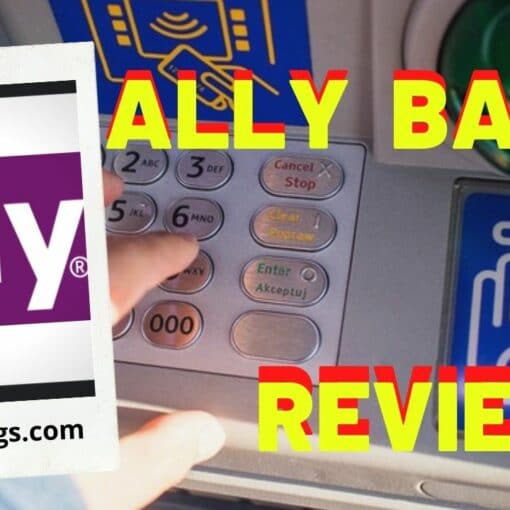What is Margin Trading – Margin Investing – Buying Stocks on Margin?
 Margin is money borrowed from a brokerage firm to purchase an investment. It is called margin as it is the marginal value between the securities held in an investor’s account and the loan amount from the broker. Margin Trading is the act of borrowing money to buy securities. The practice includes buying an asset where the buyer pays only a percentage of the asset’s value and borrows the rest from the bank or broker. The broker acts as a lender and the securities in the investor’s account is held as collateral.
Margin is money borrowed from a brokerage firm to purchase an investment. It is called margin as it is the marginal value between the securities held in an investor’s account and the loan amount from the broker. Margin Trading is the act of borrowing money to buy securities. The practice includes buying an asset where the buyer pays only a percentage of the asset’s value and borrows the rest from the bank or broker. The broker acts as a lender and the securities in the investor’s account is held as collateral.
The word margin has several meanings, not only in the world of business and finance but in other situations as well. It can refer to the difference between the cost of a product and how much you sell it for. Or, it can mean the amount by which revenue from total sales exceeds costs in a business. Margin can also refer to the portion of the interest rate on an adjustable-rate mortgage (ARM) added to the adjustment-index rate.
Understanding Margin Trading
A margin account is a type of brokerage account that is pre-qualified to borrow investment funds. With a margin account, the broker is willing to lend the investor money to buy more securities than could otherwise be afforded. It allows an investor to buy more securities than funds available in their brokerage account. To buy on margin means using the money borrowed from a broker to purchase securities. You must have a margin account to do so, rather than a standard brokerage account. Using margin to purchase securities lets you use the current cash or securities already in your account as collateral for a loan.
The collateralized loan comes with a periodic interest rate that must be paid. The investor is using borrowed money, or leverage, and therefore both the losses and gains will be magnified as a result. Margin investing can be advantageous in cases where the investor anticipates earning a higher rate of return on the investment than what he is paying in interest on the loan. For example, if you have an initial margin requirement of 60% for your margin account, and you want to purchase $10,000 worth of securities, then your margin would be $6,000, and you could borrow the rest from the broker. (Source:investopedia.com)
What is a Margin Trading Account?
A margin account isn’t a type of investment security, like a stock, mutual fund, or bond. It’s money you borrow to invest in a particular security. It’s similar to getting a mortgage to buy a home after you provide a down payment. The difference is you’re getting a margin loan from your brokerage to buy stocks, not real estate. Your broker may limit what securities can be traded on margin. Your broker will also determine what amount you can borrow with a margin loan. Under Federal Reserve Regulation T, it is possible to borrow up to 50 percent to purchase stocks or exchange-traded funds (ETF). Of course, the amount can vary depending on individual investments and the specific broker.
- Margin is a loan – It is money borrowed from a broker to purchase an investment. It is the difference between the total value of the investment and the funds available as collateral.
- Margin trading – refers to the practice of using borrowed funds from a broker to trade a financial asset. The portion of the asset you own forms the collateral for the balance of the loan from the broker.
- A margin account – Is a brokerage account. However, an investor is allowed to use the current cash or securities in their account as collateral for a loan.
- The leverage gained by margin trading – tends to amplify both gains and losses. In the event of a loss, a margin call may be required. Your broker may need to liquidate securities or have you top up your margin account.
Buying on Margin
Buying on margin is borrowing money from a broker in order to purchase stock. You can think of it as a loan from your brokerage. Margin trading allows you to buy more stock than the available funds in your brokerage account. However, to trade on margin, you first need a margin account. This is different from a regular brokerage account. A margin account is prequalified to trade using more money than is actually in the account.
By law, your broker is required to obtain your consent to open a margin account. The margin account may be part of your standard account opening agreement or maybe a completely separate agreement. An initial investment of at least $2,000 is required for a margin account, though some brokerages require more. This deposit is known as the minimum margin. Once the account is opened and operational, you can borrow up to 50% of the purchase price of a stock. This portion of the purchase price that you deposit is known as the initial margin. It’s essential to know that you don’t have to margin all the way up to 50%. You can borrow less, say 10% or 25%. Be aware that some brokerages require you to deposit more than 50% of the purchase price. (Source:investopedia.com)
Not all stocks qualify to be bought on margin. The Federal Reserve Board regulates which stocks are eligible. In general, brokers will not allow customers to purchase penny stocks, over-the-counter Bulletin Board (OTCBB) securities, or initial public offerings (IPOs) on the margin. This is because of the day-to-day risks involved with these types of stocks. Individual brokerages can also decide not to margin certain stocks. Always check with your broker to see what restrictions exist on your margin account.
Maintenance Margin
There is a restriction on a margin trading account called the maintenance margin. This is the minimum account balance you must maintain. If your equity falls below that balance, your broker may force you to deposit more funds or sell stock to pay down your loan. When this happens, it’s known as a margin call. In effect, a margin call is a demand from your brokerage for you to add money to your account. There may also be an option to closeout positions to bring your account back to the required level. If you do not meet the margin call, your brokerage firm can close out any open positions you currently have. The purpose is to bring the account back up to the minimum value you agreed to when the account was opened. Your broker can do this without your approval. Your broker can also choose which positions to liquidate.
- Commissions – In addition, your brokerage firm can charge you a commission for the transactions.
- Losses – You are responsible for any losses sustained during this process.
- Margin Calls – Your brokerage firm may liquidate enough shares or contracts to meet the margin requirement.
When you trade on margin, you can keep your loan as long as you want, provided you fulfill your obligations. This includes paying interest on the borrowed funds, commissions, and providing additional funds if required. When you sell the stock in a margin account, the proceeds first go to your broker against the repayment of the loan until it is fully paid. The remainder of the funds go back into your account and are available for another trade.
How does Margin Trading Work?
First, you need to sign a margin agreement and set up a margin account with your brokerage. This is different from an everyday cash trading account that you might have used to make cash trades. A margin account involves an extension of credit to you in connection with your securities account. As a result, a Margin Agreement acknowledges your understanding of the loan terms. It also enables securities in your account to be pledged to others to finance the funds that are loaned to you.
Once a margin trading account is established, you make an initial cash deposit in your margin account. The minimum deposit required by Regulation T regulations is $2,000 in cash, although you can deposit more. The Board of Governors of the Federal Reserve System established Regulation T. It provides rules for extensions of credit by brokers and dealers and to regulate cash accounts. At this point, you can get your first margin loan. Say you have $5,000 in your margin account and you want to borrow up to the full 50 percent limit of a stock’s purchase price allowed under Regulation T. In that case, you could buy $10,000 worth of stock. That total includes $5,000 of your own money, plus $5,000 you borrow from the brokerage.
Trading on Margin
Trading on margin increases your buying power (a.k.a. the money you have available to purchase securities) because you’re not using solely your own money. Essentially, you’re borrowing from the brokerage on the assumption that the price of the stock you’re purchasing will rise, plus you also need margin to short stocks. Keep in mind, however, that you don’t have to trade on margin at the 50 percent mark; you could opt for a smaller loan of 10 or 20 percent instead. Once you begin to accumulate some marginable stocks in your margin account, you can leverage those assets for additional margin loans. Instead of adding more cash to the pile, you can use the value of those stocks as collateral to purchase additional shares on margin. (Source:ally.com)
What are the Advantages of Margin Trading?
A key advantage is that you have more funds at your disposal to invest. You’re not tying up all of your investable dollars the way you would with a cash account. That could potentially result in a higher ratio of returns to initial investment. For example, let’s say you invest $1,000 in cash to buy 100 shares of a $100 stock. If that stock increases 50 percent in value in the next six months, your investment would be worth $1,500.
If you invest on margin, and you can buy 200 shares of stock instead. After the same timeframe, you’ll have $3,000, doubling your investment return. Or, you could buy the 100 shares on margin and have cash available for another investment. A lower initial cash investment gives you the flexibility to diversify into other investments. Also, increased diversification can help provide insulation against risk. Having more cash on hand to trade also means you’re not forced to liquidate other investments to buy additional shares.
- Increased returns – The most significant advantage of using margin is the ability to leverage your investments and increase the returns when the price of your holdings is moving in your favor.
- Competitive interest rates – Margin interest rates can be very competitive and attractive. This is due to the fact there is always collateral available. Also, your broker holds the securities and is paid first before you receive any profits from sales.
- Trading flexibility – Being able to invest more while having limited cash on hand allows you to take advantage of timely market opportunities.
- Diversification – Margin trading enables you to diversify your portfolio by using the margin buying power if you hold a concentrated stock position in your account.
Are there Downsides to Margin Trading?
At first glance, it sounds great to trade with leverage and borrow capital from your broker to trade bigger. But you need to know that there can be a big downside from trading with margin. It doesn´t mean that you can only lose the small percentage your broker requires as margin to open the position. In fact, your entire account can be wiped out.
If the stock you’ve invested in sees a sharp drop-off in value, you could lose more than the amount you deposited in your margin account. And that losing investment won’t get you off the hook for the interest on a margin loan, either. You’ll be required to pay interest on the $10,000 you borrowed on margin from your brokerage. Worst-case scenario? Your brokerage could sell all of your shares to fulfill a margin call, meaning a total loss of your initial investment. And if there’s a shortfall in the account, you’ll be on the hook for making it up. It’s also worth noting that a brokerage can increase its account maintenance level at any point without notice. If this happens, you might need to deposit more money into your account. Or you’ll be issued a margin call and some (or all) of your holdings could be sold. (Sourceally.com)
Cons of Margin Trading
- Increased risk – This is the most obvious disadvantage of trading with margin. To control a much larger position on margin means that the profits can bigger but so can the losses. This is why you must be careful. Follow very strict risk exposure and money management rules when using margin.
- Stress – Some traders can’t handle the stress of having too large of a position open. Fluctuation in their unrealized profit or losses is too big. This can lead them to take irrational decisions. Letting emotions influence your trading decisions will make you lose money in the long term. If you can’t handle big fluctuations, then you should start with smaller positions sizes.
- Margin calls – To get a margin call from your broker means that your equity is too low. It can´t support the minimum margin requirements from your broker. You need to top up with additional cash, or your trade will be closed with a loss. In either case, it leaves you with a smaller percentage of your initial equity.
Margin trading lets you open a big position with just a small percentage of its actual value. This is because of the leverage you are provided by borrowing from your broker. But this doesn´t mean that you can only lose the small percentage your broker requires as margin to open the position. In fact, your entire account can be wiped out.
What is a Margin Call?
A margin call is also known as a maintenance call. It is when your brokerage asks you to add more cash to your margin account. This occurs when your account value drops due to a decline in stock price. A margin call can happen immediately after your account’s equity value falls below a certain threshold. Brokerages typically require a baseline of 25 percent. This means you must have at least 25 percent equity of the securities in your account. Some firms have a threshold as high as 40 percent.
Your brokerage isn’t required to notify you of a margin call. However, many will try to contact you by phone or email. Also, they don’t have to give you time to add money to your account, but some might. You can respond to a margin call by making a deposit, topping up your equity sufficiently. Otherwise, your broker can sell the shares of its choosing in your margin account to make up the difference.
Margin Trading Leverage Example
Leverage is the increased “trading power” that is available when using a margin account. Leverage allows you to trade positions LARGER than the amount of money in your trading account. To use leverage in trading, the trader need only invest a certain percentage of the whole position.
Let’s say that you deposit $50,000 in your margin account. Because you put up 50% of the purchase price, this means you have $100,000 worth of buying power. For example, you can buy $50,000 worth of stock by putting up only $25,000 of your cash and using margin for the other $25,000. You still have $50,000 in buying power remaining. Or, you have enough cash to cover this transaction and haven’t tapped into your margin. You start borrowing the money only when you buy securities worth more than $50,000.
Other Uses of Margin
Accounting Margin
In business accounting, margin refers to the difference between revenue and expenses. Businesses typically track their gross profit margins, operating margins, and net profit margins. The gross profit margin measures the relationship between a company’s revenues and the cost of goods sold (COGS). The operating profit margin considers COGS and operating expenses and compares them with revenue. The net profit margin takes all these expenses, taxes, and interest into account.
Margin in Mortgage Lending
Adjustable-rate mortgages (ARM) offer a fixed interest rate for an introductory period, and then the rate adjusts. To determine the new rate, the bank adds a margin to an established index. In most cases, the margin stays the same throughout the life of the loan, but the index rate changes. For example, consider a mortgage with an adjustable-rate. It has a margin of 3% and is indexed to the Treasury Index. If the Treasury Index is 4%, the interest rate on the mortgage is the 4% Treasury index rate plus the 3% margin, or 7% total.
Margin Trading Final Words
Using margin is a form of borrowing money. It comes with costs, and eligible securities in the account are used as collateral. The primary cost is the interest you have to pay on your loan. The interest charges are applied to your account unless you decide to make payments. Over time, your debt level increases as interest charges accrue against you. As debt increases, the interest charges increase, and so on. Therefore, buying on margin is mainly used for short-term investments. The longer you hold an investment, the greater the return that is needed to break even. If you hold an investment on margin for a long period of time, the odds that you will make a profit are stacked against you.
Up Next: What Is a Dow ETF vs Dow Jones ETF?
An exchange-traded fund (ETF) is a type of security that involves a collection of securities, such as stocks. Often this collection of securities is designed to track an underlying index. However, they can be structured to track any number of industry sectors or use various strategies. A Dow ETF, or Dow Jones ETF is an exchange-traded fund that tracks the Dow Jones Industrial Average Index. ETFs in many ways are similar to mutual funds. However, they are listed on exchanges. As a result, ETF shares trade throughout the day just like an ordinary stock.



